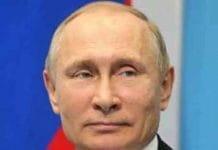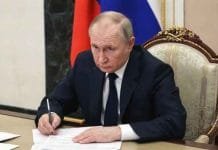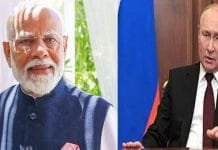Russian President Vladimir Putin has issued a severe warning to both Ukraine and NATO, signaling a significant shift in Russia’s approach to the ongoing conflict. After months of what he describes as restrained actions, Putin has made it clear that Russia is now prepared to escalate the situation further, with the goal of “completely destroying” its enemies.
Russia’s Response: From Patience to Power
Putin’s statements mark a stark departure from Russia’s previous stance, which he claims was characterized by patience and a hope for a return to normalcy. According to Putin, the Kiev regime, backed by NATO, has repeatedly crossed the line by infiltrating Russian territories, killing citizens, and committing atrocities. The Russian leader argues that these actions have forced his hand, leaving Russia with no choice but to retaliate more aggressively.
The Tactical Shift: Russia’s Recent Military Moves
In the past 24 hours alone, Russia has ramped up its military operations, launching 38 drones and two Iskander-M ballistic missiles at Ukraine. This increase in activity signals a clear message from Moscow: the era of restraint is over. Ukrainian air defenses, while active, managed to intercept 30 drones across eight regions, showcasing the ongoing intensity of the conflict.
Ukraine’s Response: A Plea for Peace or a Strategic Move?
In the wake of Putin’s threats, Ukrainian President Volodymyr Zelensky has responded with a conditional offer. Zelensky has suggested that Ukraine would cease its attacks in Russia’s Kursk region and halt its advances toward other Russian cities, including Moscow. However, this offer comes with a significant caveat: Putin must agree to a peace deal that includes the return of disputed territories, such as Crimea, to Ukraine.
The Peace Proposal: A Path Forward or a Stalemate?
Zelensky’s proposal for a peace agreement raises important questions about the future of the conflict. On one hand, it offers a potential resolution that could prevent further bloodshed and bring an end to the hostilities. On the other hand, the conditions outlined by Ukraine, particularly the demand for the return of Crimea, may prove to be a stumbling block for Russia. Putin’s recent statements suggest that he views the conflict as existential, making any concession on territories unlikely.
The Global Implications: What’s at Stake?
The escalating tension between Russia, Ukraine, and NATO has far-reaching implications beyond the immediate region. As Putin shifts from a stance of patience to one of aggressive action, the potential for a broader conflict increases. NATO’s involvement, albeit indirect, continues to fuel the situation, as the alliance’s support for Ukraine is seen by Russia as a direct threat to its sovereignty.
A Conflict at a Crossroads
As the situation stands, the Ukraine conflict is at a critical juncture. Putin’s ultimatum and the subsequent military actions signal a willingness to push the conflict to its limits. Meanwhile, Zelensky’s peace proposal, while potentially a path forward, hinges on conditions that Russia is unlikely to accept. The coming days and weeks will be crucial in determining whether this conflict will escalate into a larger, more devastating war or whether a diplomatic resolution is still possible.
The world watches closely as the stakes continue to rise, with the potential for significant global repercussions hanging in the balance.















